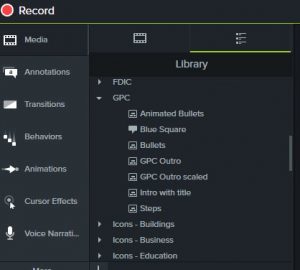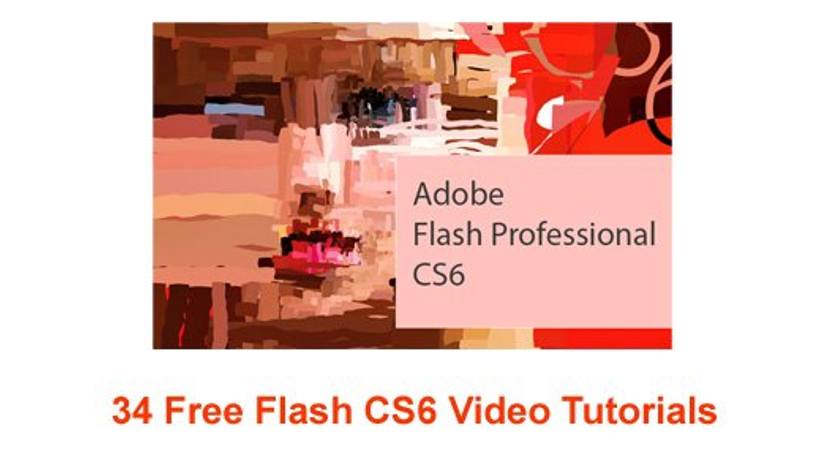Creating Video Tutorials Assembly Line Style With Camtasia: A Case Study
Most Camtasia tutorial developers know that we are usually the last ones to be hired when a new software application is ready to be launched. And once we are brought on, there is usually a big push to get all the tutorials completed within a very short timeline with a hard deadline of the planned launch date.
I just finished developing 50 tutorials for a large corporate client and to get them done quickly and efficiently we put together an "assembly line" process that worked very smoothly and allowed us to finish all the tutorials in record time.
I'd like to share our process and a couple of tips with the eLearning community. I think they'd also work for any businesses that own Camtasia and want to designate just one employee to do all the editing while the product experts do their own recordings.
Case Study: GPC
The Genuine Parts Company has been a long time a client of mine and, in addition to having been a Project Manager there about 10 years ago, I have also been contracted to do Camtasia training and various videos over the years.
Recently, I was tasked with helping Product Managers create 50 tutorials that needed to be uploaded prior to a large meeting (where they are launching new software). The requirements were that the tutorials would be no longer than 3 minutes each, would contain a logo, an intro/outro with music, some zooms, annotations, a highlighted cursor, and professional narration.
Because of the short time frame, GPC would be doing all the recordings themselves with a team of 5 product experts.
Half-Day Best Practices Session Camtasia Training
We started off with a project kickoff meeting where I conducted a half-day training session with the Product Team. I taught them how to write storyboards for specific tasks end users would be doing in the new software. Then, I explained how to use the Camtasia recorder to record themselves walking through the task. I reminded them how important it was to have created test data that they could use in the various procedures. This can sometimes be the hardest part of recording a tutorial-just gathering enough sample info that you can use to demo a procedure.
Once each brief tutorial was recorded the product manager would pass it on to me to do the rest. Lots of best practices were incorporated into showing them how to record so that the finished recordings would not need a lot of extra editing.
The Video Stylesheet
Because there were so many product specialists working on creating the tutorials for the new software app, I knew that we needed to make some upfront decisions and get a good process in place right from the beginning.
So, we spent some time developing a video style sheet which specified:
- Specs for the final videos
- An animated logo
- Fonts/colors
- Callouts/annotations
- Animated bullet point styles
- Intro and outro/with music
We also figured out how we would share files, how folders would be set up, and how many tutorials would need to be completed each week to meet our goals.
The Tutorial Process
So the process, basically, went like this. The developers would:
- Write their storyboard and record themselves walking through a feature. They included some scratch (rough) narration that would be recorded over later
- Produce their semi-edited video to an mp4 then
- Export their Camtasia Project as a zip file
The process would then move to me where I would:
- Send the storyboard plus the mp4 to a voice over talent. He would then record the narration using their scratch audio as a guide and synchronize it perfectly to the Camtasia recording.
- Replace the "scratch audio" (created by the developer) with the professional narration.
- Edit the video by speeding up text entry, cut areas with no action going on, enlarging and highlighting the cursor, adding zooms and the chosen callouts, adding an animated logo, adding the title screen and the intro/outro with music ...then lastly,
- Reproduce it and upload it to the Project Owner for review.
With this assembly line method, we were able to produce 50 tutorials over just a few weeks.
A Few Tips
1. Use The Camtasia Library
To be super efficient with this process keep all of the assets, that you'll be using over and over again, in the Camtasia Library in a folder specifically created for the project. That way, you can just drag them down each time you need them.

And write down the steps you will do for each video, in order, so you become like a well-oiled machine.
2. Smooth Cursor Movements
If the person who is doing the recording moves their mouse all over the place and doesn’t give you nice, purposeful, smooth movements it is very hard to correct this. The only thing you can do is keep lowering the cursor opacity to "0" while the mouse is erratic, then bring it back up when the mouse goes where you want. Emphasize this strongly when you show others how to get you the best recording.
3. Get Pre-Synced Narration
Find a good voice talent who will synchronize their narration to your scratch audio before they even send it to you. That saves a lot of time during editing.
Camtasia Editing: Before And After
Below is the 'before' video when it comes to me from one of the product experts:
Here’s the video after I got finished with it. BTW—You’ll only get the full HD 1080p quality if you click to watch it on YouTube and choose 1080p in the settings.
This type of assembly line method could work well even if you were doing just a handful of videos as long as they all have repeating elements such as an intro, outro, music, annotations, bullets, cursor effects, etc.
It’s always been important to me to not only teach Camtasia but to always be working on videos either for my clients or my students over at LearnCamtasia.com. It’s really the only way to stay current on the Camtasia and PowerPoint updates and to be able to solve problems for our members.
If you have any questions about this project just let me know in the comments section, and I’ll try to guide you to replicate this process.







